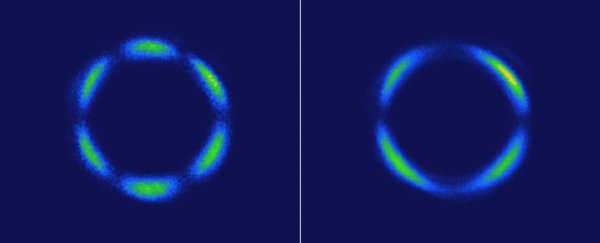Caltech physicists at the Institute for Quantum Information and Matter have discovered the first 3D quantum liquid crystal.
This is a new state of matter they expect will have applications in ultrafast quantum computing, and the researchers believe this discovery is just the 'tip of the iceberg'.
The molecules of standard liquid crystals flow freely as if they were a liquid, but stay directionally oriented like a solid. Liquid crystals can be made artificially, like those in display screens of electronic devices, or found in nature, like those found in biological cell membranes.
Quantum liquid crystals were first discovered in 1999; their molecules behave much like those in regular liquid crystals, but their electrons prefer to orient themselves along certain axes.
The electrons of the 3D quantum liquid crystals exhibit different magnetic properties depending on the direction they flow along a given axis.
Practically speaking, this means that electrifying these materials changes them into magnets, or changes the strength or orientation of their magnetism.
The research team expects that 3D quantum liquid crystals might advance the field of designing and creating more efficient computer chips by helping computer scientists exploit the direction that electrons spin.
The 3D quantum liquid crystal discovery could also advance us along the road toward building quantum computers, which will decrypt codes and make other calculations at much higher speeds thanks to the quantum nature of particles.
Achieving a quantum computer is a challenge, because quantum effects are delicate and transient. They can be changed or destroyed simply through their interactions with the surrounding environments.
This problem may be solved by a technique requiring a special material called a topological superconductor - which is where the 3D quantum liquid crystals come in.
"In the same way that 2D quantum liquid crystals have been proposed to be a precursor to high-temperature superconductors, 3D quantum liquid crystals could be the precursors to the topological superconductors we've been looking for," Caltech assistant professor of physics David Hsieh, principal investigator on the new study, said in an interview for a Caltech press release.
"Rather than rely on serendipity to find topological superconductors, we may now have a route to rationally creating them using 3D quantum liquid crystals," Hsieh lab postdoctoral scholar John Harter, the lead author of the new study published in Science, said in the press release.
"That is next on our agenda."
This article was originally published by Futurism. Read the original article.
